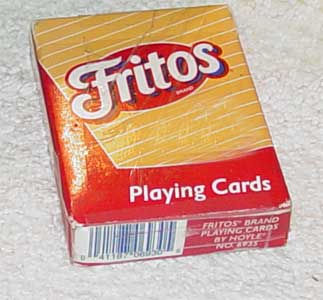
"Fritos" brand playing cards by Hoyle.

"Fritos" brand playing cards by Hoyle.
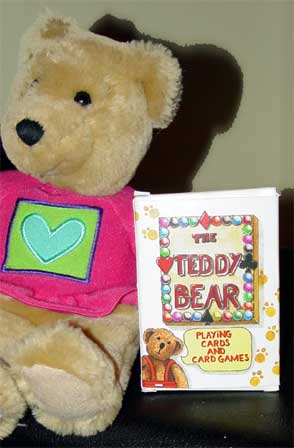
"The Teddy Bear" Playing Cards and Card Games. U. S. Games Systems, Inc., Stamford, CT. Published under license from Andrew Jones Art, London, printed in Belgium. "...for all the bears that ever there was are gathered here for certain because... -they are featured in- "The Teddy Bear Playing Cards and Card Games". "An original collection of lovable teddy bear characters created by artist Peter Wood. The face of each card features teddies in everyday or unexpected situations, resulting in a pack of cards that is both delightful to look at and fun to play with."
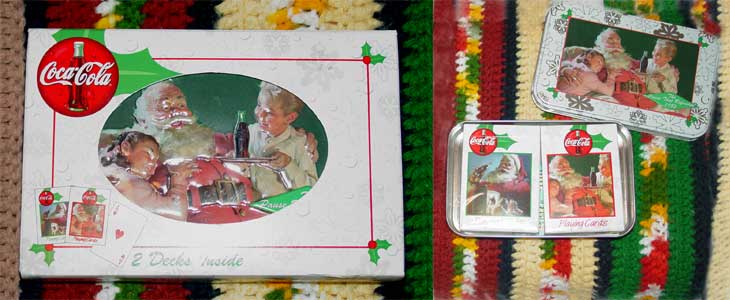
"Coca-Cola" brand playing cards. A two deck set of playing cards with Santa's picture.
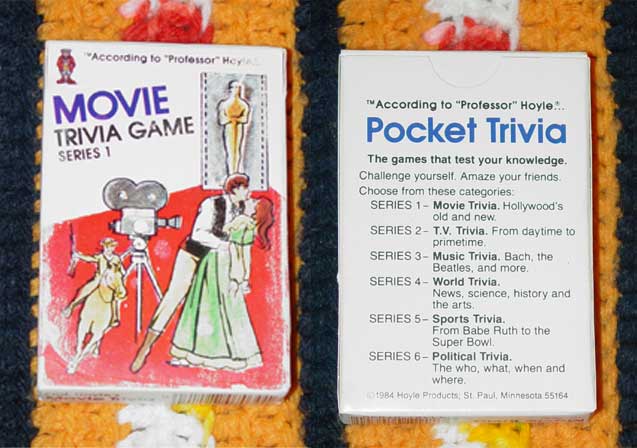
According to Professor Hoyle Pocket Trivia, 1984 Series 1, Movie Trivia card game.
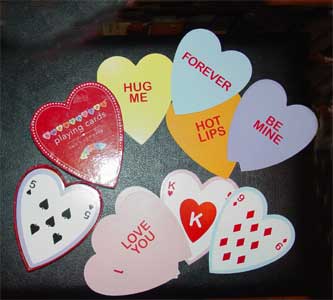
Sweetnotes playing cards by Two's Company. "Be mine, love you, kiss me..." "You can play solitaire or ...use them as coasters at your next Valentine's Party"
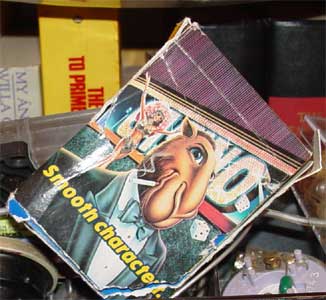
"Smooth Character" playing cards, back of box, made in the U.S.A., 1989, copyright by the R. J. Reynolds Tobacco Co.
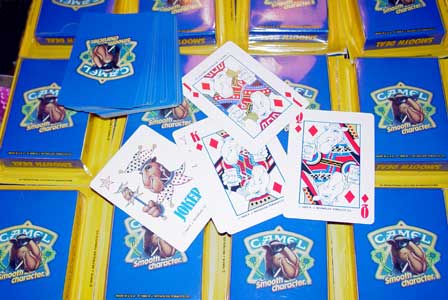
"Smooth Character" playing cards, cards and box fronts, made in the U.S.A., 1989, copyright by the R. J. Reynolds Tobacco Co.
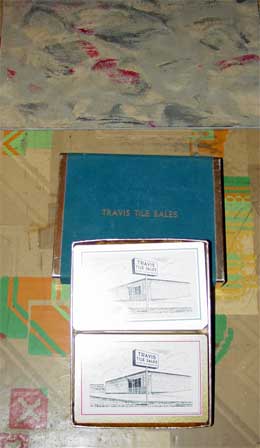
1970s playing cards advertising Travis Tile Sales, Austin, Texas.
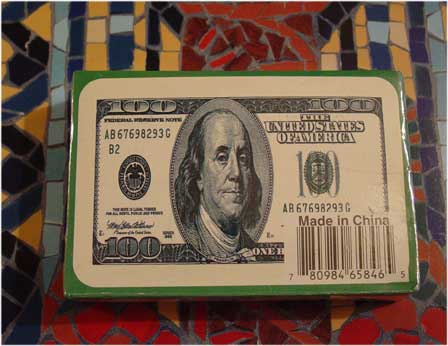
Playing cards with fake hundred dollar bills on the card fronts.
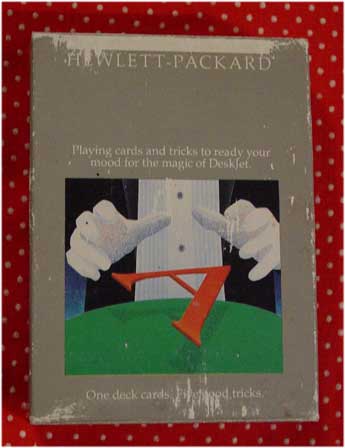
Playing cards from Hewlett-Packard advertising the Deskjet Printer "Almost Magic Five Good Tricks. The tricks include, "All of a Kind", "Four Pile Joe", "David's "A" ", "Everybody's House is Full", and "Four of a Kind". "Playing cards and tricks to ready your mood for the magic of DeskJet."
According to the HP Virtual Museum, "The HP DeskJet printer, 1988, was the first mass-market inkjet printer. Customers knew its predecessor, the HP ThinkJet, because HP had been first to market with the inkjet printer, but HP wanted to refine the technology and produce a better product. The name DeskJet was introduced to draw a clear distinction from the preceding inkjet printers HP had sold.
The DeskJet offered continuous plain-paper printing and higher print quality than its inkjet predecessors. At about $1,000, it was the least expensive non-impact printer on the market at the time it was introduced. However, HP wanted to bring the price down even more. By 1993, when HP had achieved enough sales volume to employ economies of scale, the list price was $365. Customers could now get a printer that was superior in every way to an impact printer (such as a dot-matrix printer or daisy wheel printer) for the same price. And by 1994, the DeskJet offered a color printing upgrade, creating single-handedly a revolution in color printing.
Perhaps the most significant technological achievement in the early days of HP's DeskJet printer was the creation of a very inexpensive, disposable print head that could be built into the ink cartridge itself. The value and efficiency of a disposable print head is in its ability to guarantee a consistently high level of print quality over the entire life of the printer. Competitors offered permanent print heads, which tended to clog and need replacement.
The DeskJet developed into HP's current Deskjet, Photosmart and Professional Series printer lines, all of which are based on thermal inkjet technology."

These are trading cards that are numbered and have different Bratz dolls on each card.

Playing cards with pictures of 1903 to 1950 models of Harley Davidson Motorcycles.
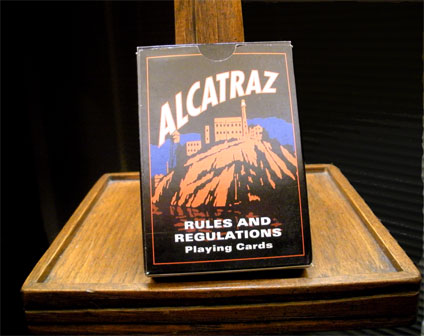
Alcatraz playing cards, 2003.
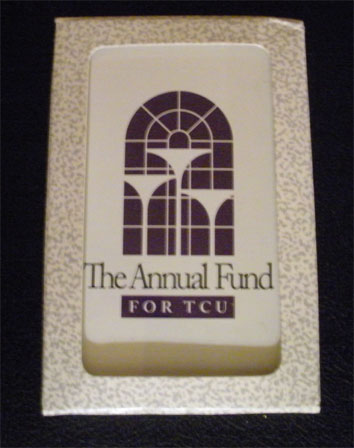
TCU Annual Fund playing cards.

Copyright 2000-2008, Texas Water Towers Dot Com. All Rights Reserved.